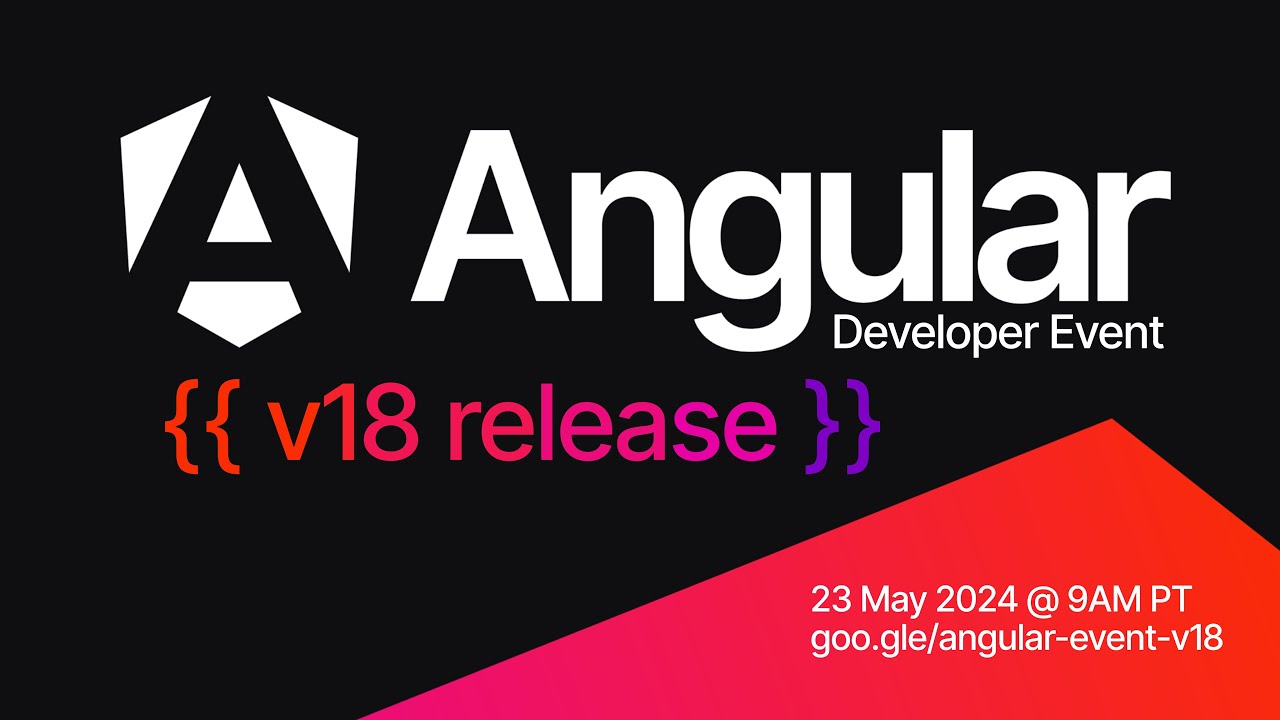More updates from Angular v18
Summary
TLDRAngular v18 introduces a suite of enhancements aimed at refining web app development. It brings new signal-based APIs, including Signal Inputs and Model Input API, for optimized data binding and two-way synchronization. The release also features Signal Query APIs for reactive, type-safe interactions with content and view children. An experimental preview of Zoneless Angular is included, aiming to make Zone.js optional. Other improvements include TypeScript 5.4 support, default values for ng-content, and a new global observable for Angular Forms. These updates are part of Angular's ongoing commitment to incremental advancements in developer experience.
Takeaways
- 🎉 Angular v18 has been released with new APIs and features to enhance the development of web applications.
- 🚀 Introduction of Signal Inputs allows for binding values from a parent component using signals, enabling lifecycle changes.
- 🔄 The new Model Input API facilitates two-way data binding, allowing components to propagate new values back to their parents.
- 🔍 Signal Query APIs provide a typesafe, reactive way to interact with ContentChildren and ViewChildren, offering improved type safety and lazier updates.
- 🌐 Zoneless Angular is now available as an experimental feature, aiming to make Zone.js fully optional for developers.
- 🛠 Incremental improvements in v18 allow developers to explore removing zones from their code, with eventCoalescing on by default for better scheduling.
- 📝 TypeScript 5.4 features are now available in Angular applications, including preserved narrowing and the NoInfer utility type.
- 📌 Developers can provide a default value for ng-content, offering a placeholder for empty lists and components without content.
- 🗸 Angular Forms introduces a new global observable for tracking changes across any abstract control and its children, including events like touched and dirty.
- 🔑 Most of these new features were introduced in minor releases, meaning developers don't have to wait for major releases to benefit from enhancements.
- 📈 The Angular team is actively working on the future of the framework, with more information available on their public roadmap.
Q & A
What is the main topic of the video script provided?
-The main topic of the video script is the release of Angular v18 and its new features, bug fixes, and incremental improvements for building web applications.
What are the new APIs introduced in Angular v18 to improve the developer experience?
-Angular v18 introduces new signal-based APIs, including Signal Inputs, Model Input API, and Signal Query APIs to enhance the developer experience.
How do Signal Inputs work in Angular v18?
-Signal Inputs in Angular v18 allow values to be bound from a parent component and are exposed using a signal, enabling them to change during the lifecycle of the component.
What is the purpose of the Model Input API in Angular v18?
-The Model Input API in Angular v18 enables a component to propagate new values back to another component, providing a typesafe, reactive way to interact with data.
How do Signal Query APIs differ from the previous approach for querying ContentChildren and ViewChildren?
-Signal Query APIs expose query results as signals, allowing them to be composed with other signals and drive change detection, offering benefits like predictable timing, simpler API, improved type safety, and lazier updates.
What is the significance of the experimental preview of Zoneless Angular in v18?
-The experimental preview of Zoneless Angular in v18 is a step towards making Zone.js fully optional, improving the developer experience by allowing Angular to function without relying on Zone.js for change detection.
What improvements does Angular v18 offer for developers using TypeScript 5.4 features?
-Angular v18 allows developers to enjoy the latest features of TypeScript 5.4, including preserved narrowing, enclosures following last assignments, the NoInfer utility type, and more.
What is the new feature in Angular v18 that allows developers to provide a default value for ng-content?
-In Angular v18, developers can now provide a default value for ng-content, enabling placeholders for empty lists and components with no current content.
How does the new global observable introduced in Angular Forms help developers track changes?
-The new global observable in Angular Forms allows developers to subscribe to track changes around any abstract control and its children, including events like touched, dirty, etc., in addition to value and status, all through a single observable.
What does the Angular team emphasize regarding the frequency of updates and enhancements?
-The Angular team emphasizes that most of the new features and enhancements have been introduced in minor releases leading up to v18, meaning developers do not have to wait for major releases to receive updates.
How can developers stay informed about the future of Angular and its ongoing developments?
-Developers can stay informed about the future of Angular and its ongoing developments by visiting the public roadmap at angular.dev/roadmap and checking the full changelog on GitHub for each feature, fix, and enhancement in v18.
Outlines

This section is available to paid users only. Please upgrade to access this part.
Upgrade NowMindmap

This section is available to paid users only. Please upgrade to access this part.
Upgrade NowKeywords

This section is available to paid users only. Please upgrade to access this part.
Upgrade NowHighlights

This section is available to paid users only. Please upgrade to access this part.
Upgrade NowTranscripts

This section is available to paid users only. Please upgrade to access this part.
Upgrade Now5.0 / 5 (0 votes)





